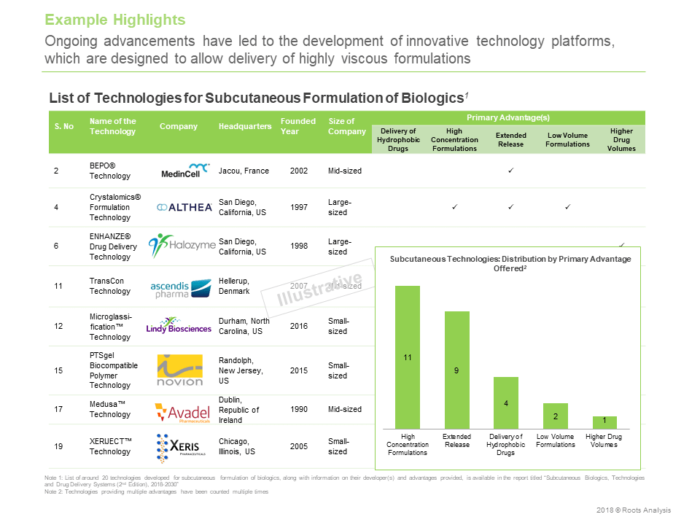Biologics constitute a majority of the top selling drugs of today and also represent one of the fastest growing segments of the overall pharmaceutical industry. In fact, the share of biologics in the overall pharmaceutical market has increased from 16% in 2006 to over 25% in 2017.Having reported over 70% increase in revenues over the past 5-6 years, the market for biologically derived products is currently estimated to be worth more than USD 200 billion.Despite their clinical and commercial success, biopharmaceutical products are associated with high development costs, which are evidently reflected in their prices. Moreover, such therapies are usually designed for intravenous administration, which require a clinical setting (hospitals / infusion centers) for dosing; this further adds to the overall treatment cost. Of late, the subcutaneous route of administration has emerged as a promising and viable approach for the parenteral delivery of biologic drugs. Owing to several compelling advantages, such as patient convenience, potential for self-administration, better therapy adherence and reduced healthcare costs, the concept is steadily gaining traction within the healthcare industry
